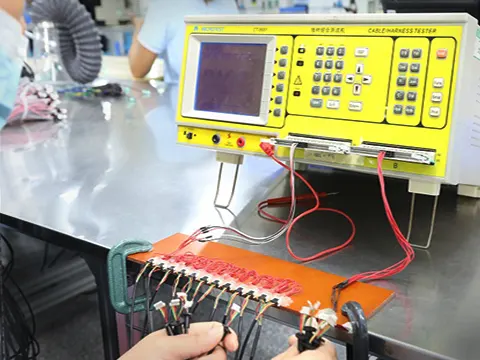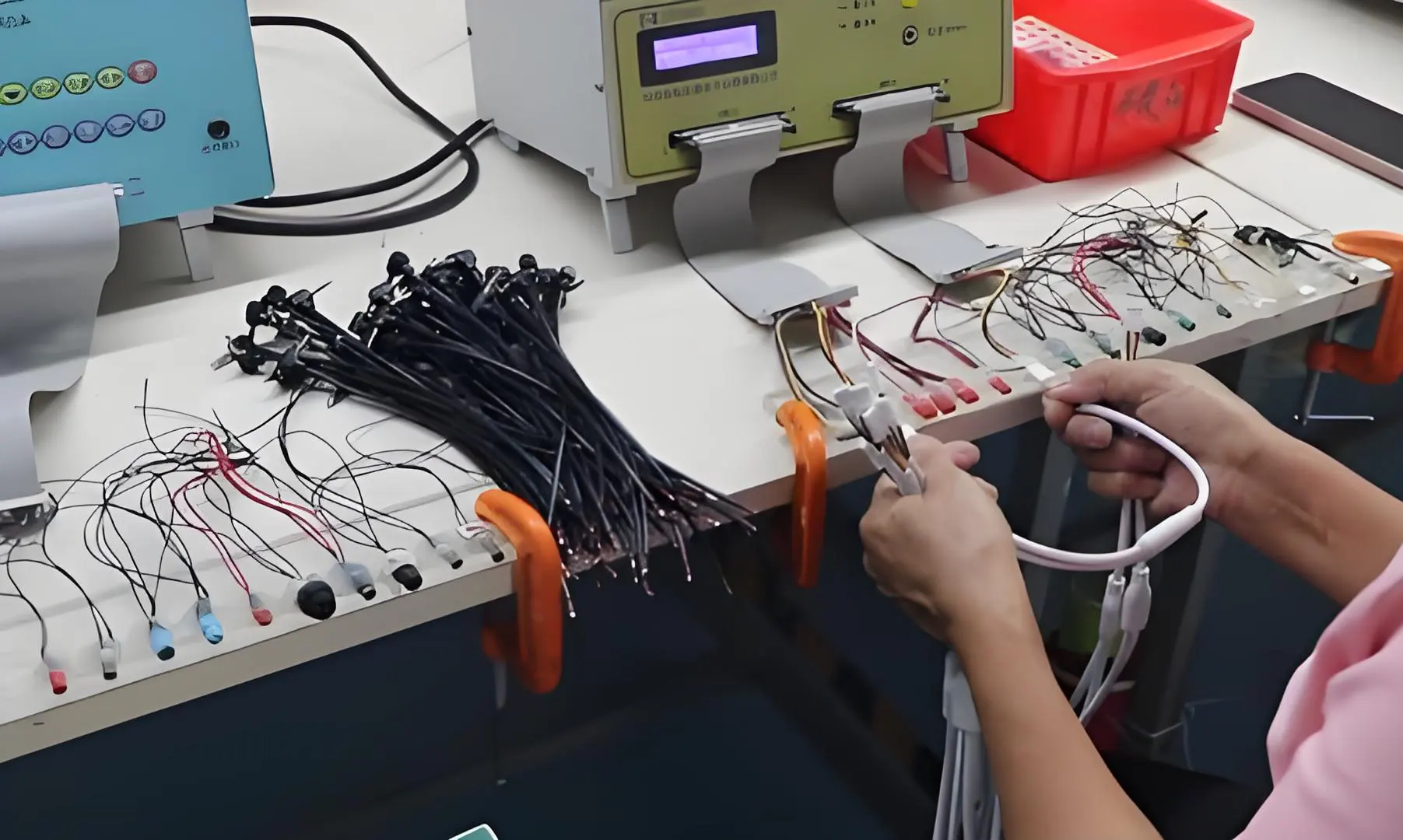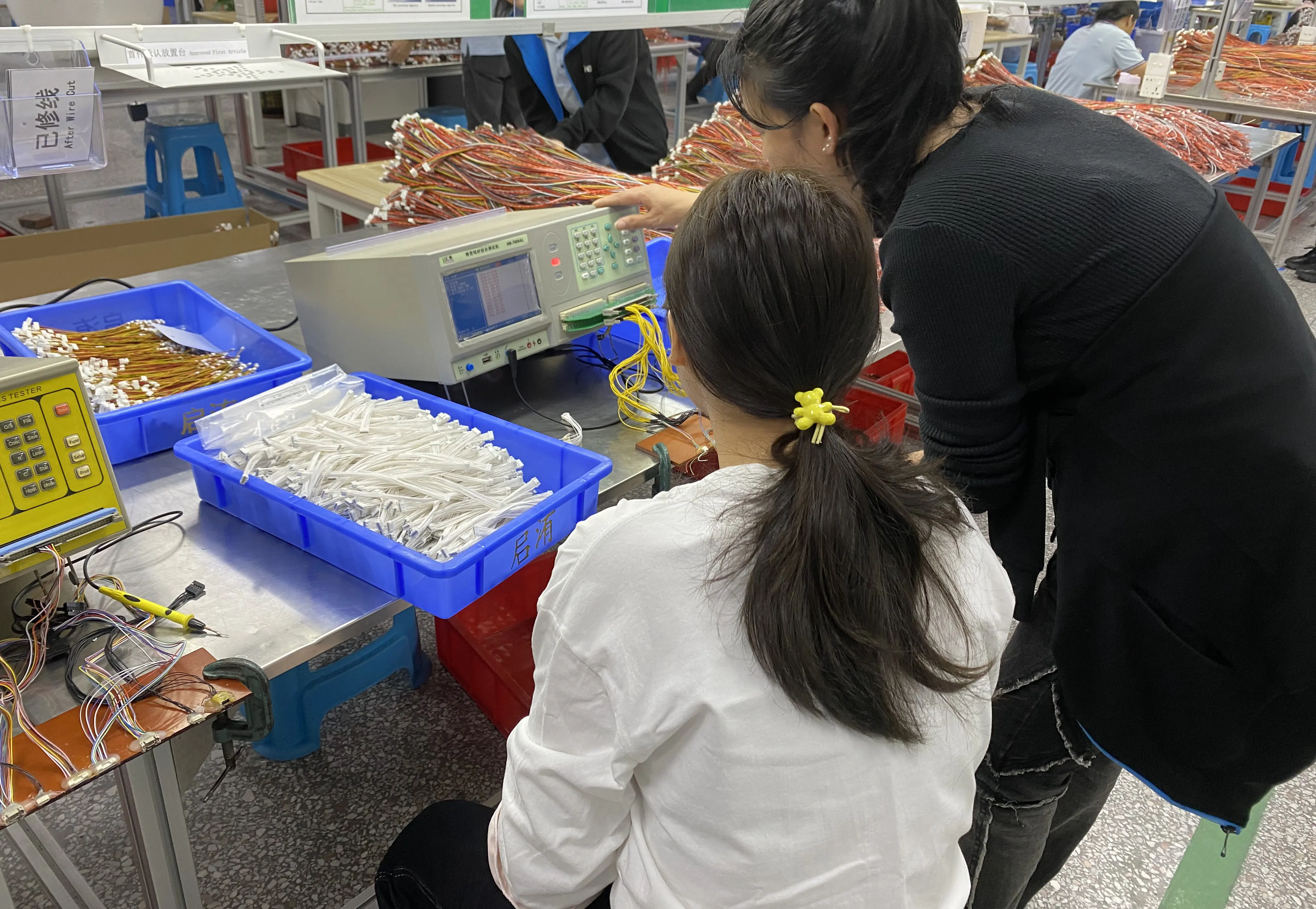Quality control standards for wire harnesses
I :the wiring harness inspection process
- Appearance inspection: check whether the appearance of the harness is intact, no damage, breakage, exposure and other phenomena.
- Dimensional inspection: Measure the size of the wire harness to see if it meets the design requirements, to avoid over-tightening or over-loosening.
- Wire check: check the quality and specifications of the wire to see if it meets the requirements, such as electrical conductivity, heat resistance and so on.
- Fixing check: check the fixing of the wire harness to ensure that it will not be loose or fall off.
II: the harness inspection tools
- visual tools: magnifying glass, flashlight, etc..
- Measuring tools: calipers, tape measure, etc.
- testing instruments: multimeter, insulation tester, etc..
III: the wiring harness inspection methods
- Wire integrity check: one by one check each wire number, specifications, quality and so on whether it meets the requirements.
- Harness assembly check: connect the harness with the relevant equipment to check whether it works properly.
- Insulation test: Use insulation tester to test the insulation performance of the wire harness to ensure that there is no leakage.
- Voltage resistance test: conduct voltage resistance test on the harness to ensure that it can withstand a certain voltage without damage.
IV: the harness inspection standards
- the quality of the wire meets the requirements, no damage, fracture, bare and other phenomena.
- the size of the wiring harness meets the design requirements, well-fixed.
- the insulation performance of the harness should meet the relevant standards, no leakage.
- the voltage resistance of the wiring harness should meet the requirements of the relevant standards, can withstand the normal operating range of voltage.
For the unqualified harness, it should be reworked or scrapped, and make corresponding records and markings. For major quality problems, should be promptly reported and analyze the reasons and take appropriate corrective measures.
V. Other Precautions
- The inspectors should have the appropriate inspection skills and knowledge to ensure the accuracy and reliability of the test results.
- The inspection process should pay attention to safety, to avoid injury or electric shock accident.
- After the completion of the inspection, the test results should be summarized and analyzed for follow-up work to provide reference and reference.

In short, the harness inspection is to ensure the safety and stability of the equipment is an important part. Through the standardized inspection process, tools and methods, as well as standard inspection requirements, can ensure the quality and safety of the wiring harness, for the normal operation of the equipment to provide protection.
Recent Posts
2025-04-03 11:14:03
What is a BMS Harness?
2025-04-02 10:50:47
What is UL Standard?
2025-04-02 08:57:29




